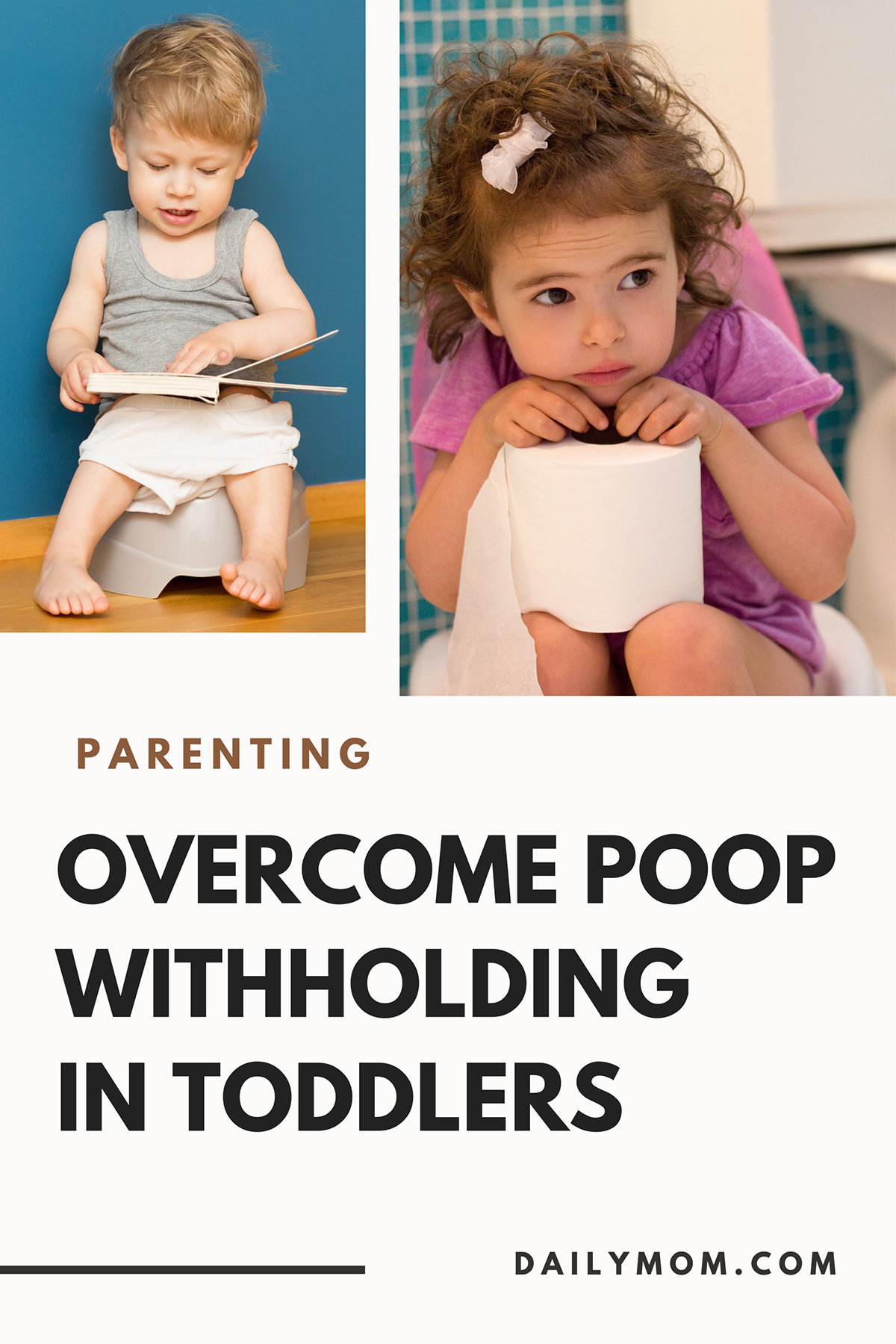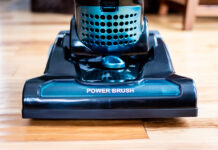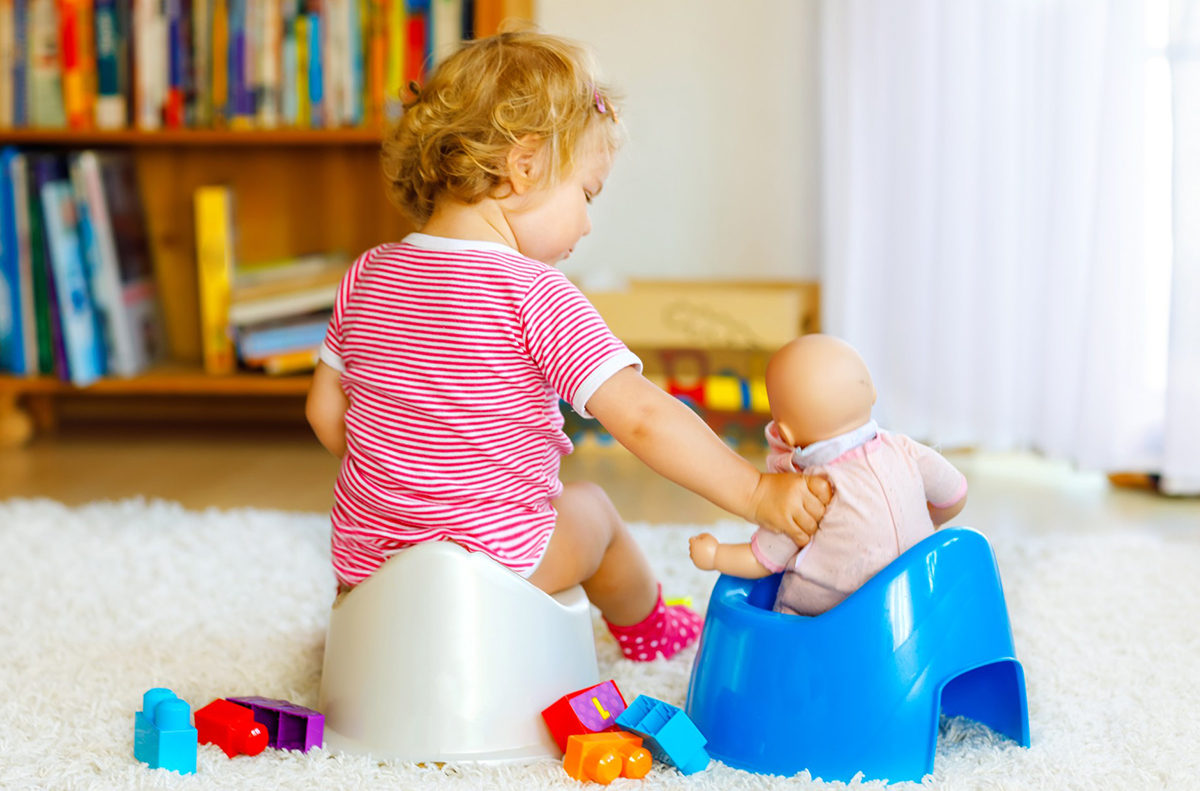Poop withholding can be a battle between children and parents that is tough to find answers to. For some, potty training, in general, is one of the toughest battles of child-rearing. Even if you manage to convince your child to pee on the potty with any sort of consistency, sometimes your toddler just won’t poop on the potty. Even worse, your child starts resisting the act of pooping altogether. This is known as poop withholding. If you’ve ever dealt with times when a toddler won’t poop you know how stressful it can be.
Toddlers may not poop or resist eliminating their waste for physical and psychological reasons. First, rule out physical reasons like constipation and intestinal blockages by visiting your pediatrician. But don’t worry, there are many toddler withholding poop solutions that you can try with your child.
What is “poop withholding”?
This condition is most common among children between the ages of 2-4 years old, but poop withholding has the potential to affect babies and school-age kids, often triggered by an episode of painful constipation.
The child may go weeks at a time without eliminating their waste. In this situation, the child may or may not be constipated. A lot of children who poop withhold aren’t in any significant pain. They will urinate without any problem and play like any other kid.
However, a child holding poop for days will stink. The child’s gas will reach unspeakable limits (if you’ve been here, you know that it can be hard to even sit near your child when they are poop withholding). This resistance can cause a child to soil their underwear, which can lead to a child who hides dirty undies around the house. Whatever the case, no one is having fun.
Tips for Poop Withholding
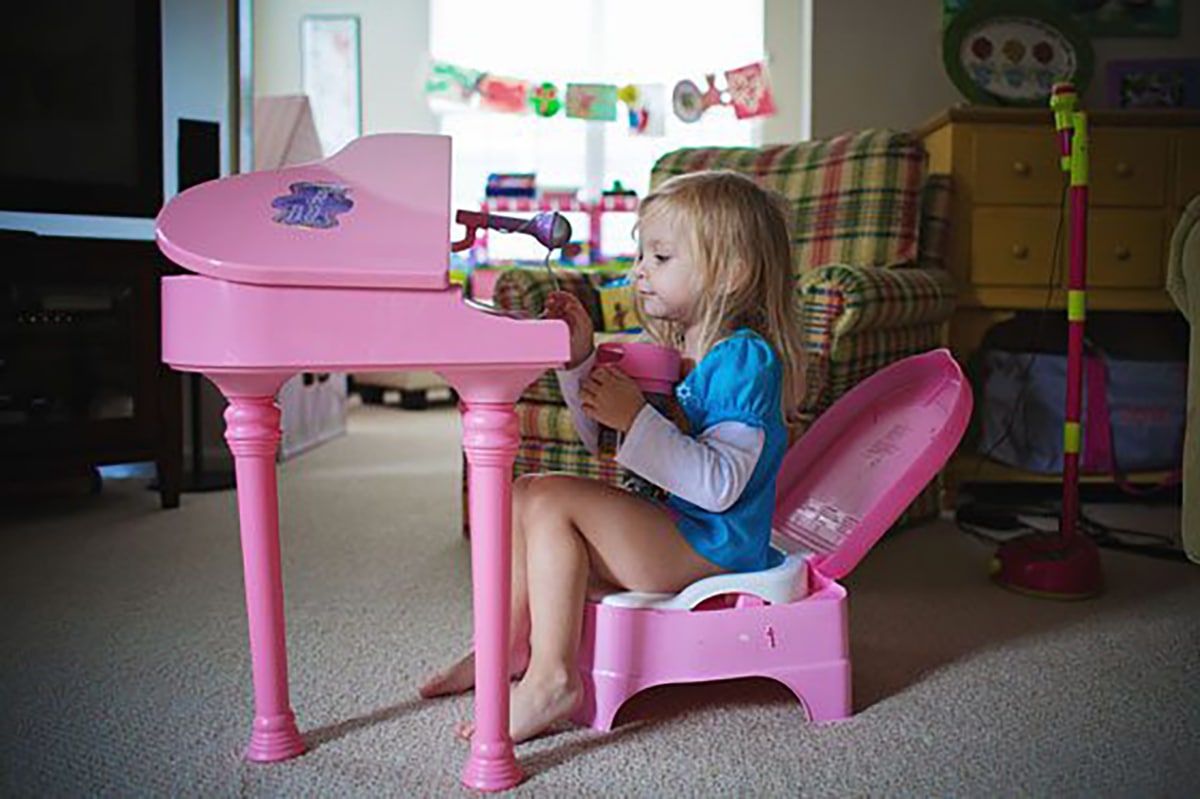
Physical Limitations: In many cases, a child is experiencing some sort of physical limitation that makes it hard to use the bathroom. Whether they are constipated, have some sort of intestinal blockage, bowel obstruction, irritable bowel syndrome or even undiagnosed food sensitivities; pooping hurts.
Sensory Aversion: If your child has been diagnosed with a Sensory Processing Disorder, then he may not like to poop because he doesn’t like how it feels. Kids who have an aversion to pooping would rather clench their sphincter muscles for days or even weeks than to feel the sensation of waste being eliminated from their bowels.
Many children will accept pooping in a diaper (or their underpants), but will avoid pooping in the toilet at all costs. Stool withholding psychology can include common fears like being afraid of balancing on the potty or falling in, the sound of the toilet as it flushes, or fear of the bathroom itself.
A child may have a bad memory associated with pooping. This can happen if your child has a bout of constipation, followed by blood in their stool. It also can happen if an older sibling or another child makes fun of them over a poopy situation. Also, be sure that you rule out sexual or physical abuse, which can be a root cause for elimination issues in young children.
1. Be Patient When Your Toddler Won’t Poop. Everyone poops in his own time. For some, that means after every meal, for others, it means once a day, and for others, it means every few days. Whatever the case, everybody’s body is different. Know that you will get frustrated with your child when poop withholding, but forcing the issue will not make anyone poop on demand.
READ MORE: I Tried It – The 48 Hour Potty Training Method.
2. Read Books About Pooping. The fun lift-the-flap book, “Where’s the Poop” by Julie Markes shows children that all creatures have a place to poop: tigers in the jungle, kangaroos in the outback, monkeys in the rain forest, and the potty for them! The book, “I Can’t, I Won’t, No Way!: A Book for Children Who Refuse to Poop” by Tracey J. Vessillo presents the issue in kid-friendly terms.
Cartoons like CocoMelon even have Potty training videos that encourage little ones to sit on the potty.
3. Establish a Routine: A consistent routine is often the key to creating a pattern of holding in poop. It’s as simple as keeping regular meal times, followed by a trip to the bathroom. Encourage your child to use the bathroom at regular intervals (after waking up, following a meal, or before bedtime).
READ MORE: Overcoming Potty Training Obstacles
Avoid using the potty as punishment (ex. “you better poop on that potty or I’ll take away your iPad!”). Focus on establishing the routine. If they go – great; but don’t express disappointment or frustration if they don’t. Just keep trying. Rather than forcing poop on your schedule, just follow your kid’s natural routine.
4. Adjust Your Child’s Diet: Increase natural fibers in your child’s diet if they have been poop withholding. While this can encourage the bowels, it may not cure the situation, but it can help. Emphasize non-constipating foods, increase natural fibers found in most fruits and vegetables, make sure your child is getting plenty of fluids, and limit foods that have a tendency to constipate.
5. Daily Supplements. Another common tool recommended to kids who are experiencing poop withholding is the use of a fiber supplement, laxative, stool softener, or enema. Talk to your pediatrician about these options.
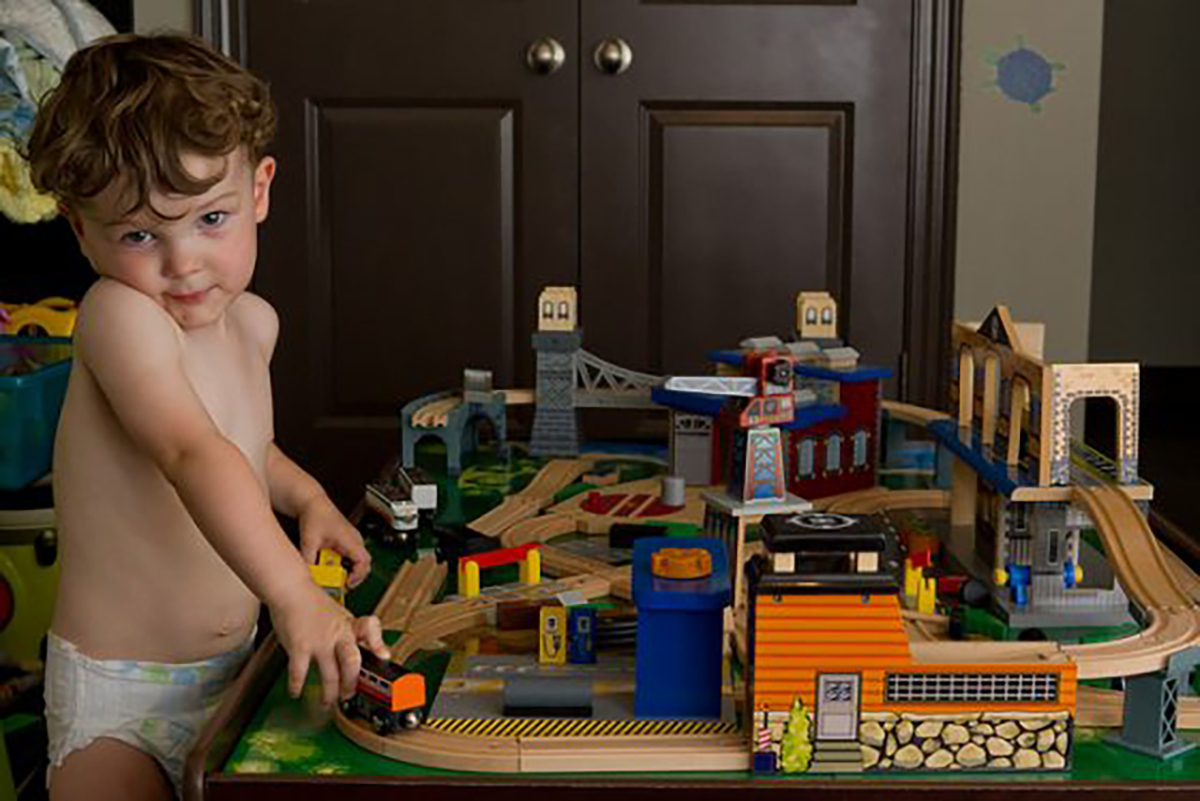
6. Ensure Their Comfort. Figure out where your child prefers to use the bathroom and roll with it. If that means your child will only pee and poop on their little potty, suck it up and buy that exact potty for every level of the house (even bring it on the road with you when visiting relatives). Yes – that means more cleaning for you, but your job is to remove any obstacles that may be preventing them from poop withholding.
What if your child is only comfortable pooping in a diaper? Again, roll with it. It’s more important that they eliminate waste in a diaper than it is that they poop in the potty.
READ MORE: Potty Training Product Guide
There are children who are “pee trained,” but request a diaper for pooping. Pay attention to their pooping behaviors. Typically, children will seek some form of privacy to empty their bowels (be it in a corner, behind furniture, squatting in front of the train table, etc.). Gradually encourage them to take that private moment to the restroom, even while staying in a diaper.
Over time, when your toddler won’t poop, you might suggest that they sit on a potty and poop – again, still in their diaper. Then, cut a small hole in their diaper and increase the size of that hole over a period of weeks until your child is pooping through the diaper straight into the toilet.
If the sound of poop splashing in the water scares them, you can have them sit on the potty directly while having a diaper taped under them (on the potty) to catch the poop. If it sounds like a lot of work – it is, but poop is poop.
7. Rewards. Some find that rewards work well. So, if your kid will poop for stickers that will eventually earn a toy, more power to you. Our experience has been that the relief of pooping is enough of a reward.
If you’ve put all of the other tips into action, you’ll find that your child has all the tools they need to overcome whatever it is that is preventing them from pooping. When they do finally get over that hump, it feels good and they’ll want to celebrate it with you in some way or another (high fives, hugs, etc.). Not only is their body thanking them, but there is a sense of accomplishment.
What causes poop withholding?
Constipation is the most common reason for withholding. Constipation occurs when a child has difficulty passing stool, resulting in hard, dry stools and straining during bowel movements. Other causes of poop withholding can include an underlying medical condition, fear of pain associated with passing a hard stool, a side effect of certain medications, or simply a power struggle between parent and child.
How do you deal with poop withholding?
Behavioral therapy for stool withholding can be an effective way to help a child overcome the issue of poop withholding. It involves teaching the child positive behaviors to replace the withholding behavior, such as sitting on the toilet for a certain amount of time each day. It also can involve incentives, such as providing rewards for successfully going to the bathroom.
How do you know if your child is withholding stool?
Stool withholding is when a child holds their poop in because they are scared of the pain associated with pooping, or they are trying to avoid going to the bathroom. When a toddler cries when pooping but poop is soft, it can be psychological. It is important to seek medical advice and understand the root cause of the issue.
Poop withholding is a common phenomenon among toddlers, but it can be frustrating and concerning for parents. If your toddler is poop withholding, they may be doing it for a variety of reasons, including psychological, medical, or sensory-related ones. But don’t worry, your child will eventually learn to poop. Until then, hang on tight and breathe.
This post is meant for educational purposes only. It is not intended to replace medical advice.
WANT TO READ MORE?
Check out Daily Mom’s post, “4 Best Kept Secrets to Parenting a Strong-Willed Child,” for more parenting tips.
CONNECT WITH DAILY MOM
💖 NEWSLETTER: DAILY READS IN YOUR INBOX 💖
Sign up to receive our picks for the best things to do, see and buy so you can relax and focus on more important tasks! Let us help you be the best version of yourself you can be!
BE SOCIAL WITH US
📌 LOVE IT? PIN IT!📌
